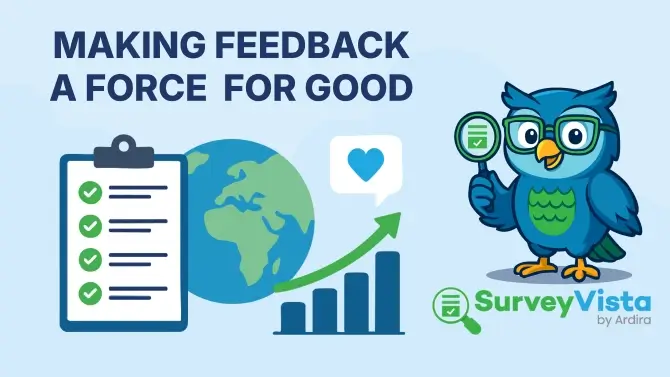The moment after a customer hits “buy” is pure gold for feedback collection.
Their experience is fresh, emotions are real, and they’re still engaged with your brand. Yet most businesses either skip this opportunity entirely or mess it up with poorly timed, generic surveys that customers ignore.
Post purchase surveys aren’t just about collecting feedback—they’re about turning one-time buyers into loyal customers who stick around and tell their friends about you.
When done right, they become your secret weapon for understanding what’s working, what’s broken, and what could make your customers absolutely love doing business with you.
What is a Post Purchase Survey?
Post purchase surveys are feedback forms sent to customers immediately after they complete a transaction.
These surveys help businesses collect insights on customer satisfaction, understand buying behavior, and pinpoint areas for improvement in products, services, or the overall customer experience.
The timing advantage here is everything. Customers have just invested their money and attention in your brand, making their feedback incredibly valuable and authentic.
Smart businesses use post purchase surveys to bridge the gap between completing a transaction and building a relationship. These surveys help identify which customers are likely to become repeat buyers and which ones need extra attention to prevent churn.
Every survey response becomes intelligence about your customer experience. You’re not just collecting opinions—you’re gathering data that can improve your product, streamline your processes, and identify your biggest fans as part of why customer feedback drives business growth.
What are the Best Post Purchase Questions to Ask?
The questions you ask determine the quality of insights you get back. Generic “how did we do?” surveys produce generic responses that don’t help anyone.
Strategic questions uncover specific improvement opportunities and identify patterns that drive real business decisions.
Gauging Satisfaction
Start with a simple satisfaction rating that gives you a baseline metric to track over time. Use consistent scales so you can spot trends and benchmark against industry standards.
- Overall satisfaction: “How satisfied are you with your purchase experience?”
• Likelihood to recommend: “How likely are you to recommend us to a friend?”
• Likelihood to purchase again: “How likely are you to buy from us again?”
These core metrics become your north star measurements. Track them regularly to understand whether your customer experience is improving or declining. Consider implementing automated NPS surveys to capture loyalty insights consistently.
Product and Service Quality Assessment
Dig into specific aspects of what you delivered to understand where you’re exceeding expectations and where you’re falling short. These questions directly inform product development and quality control priorities.
- Product quality vs. expectations: “How did the product quality compare to what you expected?”
• Value for money: “Do you feel you received good value for what you paid?”
• Product information accuracy: “How accurately did our product descriptions match what you received?”
Quality feedback often reveals disconnect between marketing promises and actual delivery. Use these insights to align your messaging with reality or improve your products to match your promises.
Purchase Process Evaluation
Your checkout experience can make or break customer satisfaction, especially for first-time buyers. These questions help identify friction points that might be costing you conversions or creating negative first impressions.
- Ease of finding products: “How easy was it to find what you were looking for?”
• Checkout process: “How would you rate the checkout process?”
• Payment options: “Were you satisfied with the available payment methods?”
E-commerce businesses especially benefit from process feedback since small improvements in user experience can significantly impact conversion rates. Consider pairing these insights with website usability surveys for a complete picture of your digital experience.
When to Send Post Purchase Surveys?
Timing can make or break your survey response rates and data quality.
Send too early, and customers haven’t had time to evaluate their purchase.
Send too late, and they’ve forgotten the details of their experience.
Immediate vs Delayed Survey Strategies
Immediate surveys work best for capturing feedback about the buying process itself. Deploy these on confirmation pages or through automated emails sent within minutes of purchase completion.
Use immediate surveys to ask about website usability, checkout experience, customer service interactions, and any technical issues encountered. For measuring customer effort during the purchase process, automated CES surveys can provide valuable insights into friction points.
Delayed surveys give customers time to receive, unpack, and start using their purchase. This timing works better for product quality feedback and overall satisfaction assessment.
Delivery-Based Timing
For physical products, trigger surveys based on delivery confirmation rather than purchase date. This ensures customers have actually received their order before you ask for feedback about the complete experience.
Delivery-based timing requires integration with your shipping systems but provides much more relevant feedback. Customers can comment on packaging quality, shipping speed, and product condition upon arrival.
Best Ways to Share These Surveys?
How you deliver surveys matters as much as what you ask. The best survey in the world won’t help if customers never see it or find it difficult to complete.
Modern customers interact with brands across multiple channels, so your survey distribution should meet them where they’re already engaged.
Email Survey Automation
Email surveys leverage existing customer communication channels and allow for rich personalization based on purchase history. Set up automated triggers that send personalized invitations with specific purchase context.
Effective email surveys include clear subject lines that reference the recent purchase, personalized content mentioning specific products bought, and mobile-optimized survey links. Avoid generic “How did we do?” subject lines that scream automated survey.
Multi-Channel Survey Strategies
Combine different distribution methods to maximize response rates without annoying customers. Start with immediate website surveys for quick process feedback, then follow up with email surveys for detailed product evaluation.
Create preference centers where customers can choose how they want to receive survey invitations. Track response patterns across channels to understand which methods work best for different customer segments.
How to Design Surveys Customers Want to Complete
Survey design makes the difference between useful feedback and abandoned forms. Customers are busy, distracted, and probably dealing with survey fatigue from other businesses asking for their opinions.
Your survey needs to feel valuable to customers, not just to you. Focus on creating branded surveys that maintain consistency with your brand experience and build trust.
Fighting Survey Fatigue
Keep surveys short and focused on what you actually need to know. Every question should serve a specific purpose that leads to actionable insights or business decisions.
Aim for surveys that take 2-3 minutes maximum to complete. Use progress indicators so customers know how much time they’re committing and can see they’re making progress.
Mobile-First Design Principles
Most customers will complete your survey on their phone, so design for mobile first and ensure desktop compatibility second. Use large, touch-friendly buttons and minimize typing requirements.
Mobile-optimized surveys feature single-column layouts that scroll naturally, large tap targets for rating scales, minimal text input requirements, and fast loading times on cellular connections.
How to Take Action on Your Survey Responses
Collecting feedback is just the beginning. The real value comes from turning responses into actions that improve customer experiences and drive business results.
Your survey program should include clear processes for reviewing responses, identifying trends, and implementing changes based on what customers tell you. This approach aligns with leveraging survey insights for marketing strategies that drive measurable business outcomes.
Real-Time Response Triggers
Set up automated workflows that respond immediately to specific types of feedback. Negative responses should trigger customer service follow-up within hours, not days.
Create different response protocols for different feedback types: immediate customer service outreach for detractors, targeted content for passives, and invitations to review sites for promoters. Speed matters when responding to negative feedback.
Integration with Customer Data
Survey responses become exponentially more valuable when connected to broader customer profiles. Link feedback to purchase history, support interactions, and demographic information to understand patterns and predict behavior.
This integration enables sophisticated segmentation strategies to identify which customer types are most satisfied, understand how satisfaction correlates with purchase frequency, and predict which customers are at risk of churning.
Getting Started with Post Purchase Surveys
Launching an effective post purchase survey program doesn’t have to be overwhelming. Start with clear objectives, simple questions, and a commitment to acting on what you learn.
The key is beginning with a focused approach that you can expand and refine based on initial results. Consider how post purchase surveys fit into your broader comprehensive customer feedback strategy for maximum impact.
Frequently Asked Questions
When is the best time to send post purchase surveys?
For digital products, send surveys immediately after purchase to capture checkout experience feedback. For physical products, wait until after delivery confirmation so customers can evaluate the complete experience including product quality and shipping.
How long should post purchase surveys be?
Keep surveys to 2-3 minutes maximum with 3-5 focused questions. Every additional question reduces completion rates and response quality. Focus on essential insights you’ll actually act on rather than nice-to-know information.
What’s the best way to increase survey response rates?
Use mobile-optimized designs, offer relevant incentives like discount codes, personalize survey invitations with specific purchase details, and clearly communicate how long the survey takes to complete.
How do you handle negative feedback from post purchase surveys?
Set up automated triggers to route negative responses to customer service teams within hours. Respond personally to address concerns and follow up to confirm resolution. Quick responses often turn dissatisfied customers into loyal advocates.
Should post purchase surveys be different for B2B vs B2C customers?
Yes. B2B surveys should focus on sales process quality, implementation support, and business impact. B2C surveys emphasize website experience, product satisfaction, and checkout process. B2B customers also expect longer evaluation periods.
More Like This

Rajesh Unadkat 
Founder and CEO
Rajesh is the visionary leader at the helm of SurveyVista. With a profound vision for the transformative potential of survey solutions, he founded the company in 2020. Rajesh's unwavering commitment to harnessing the power of data-driven insights has led to SurveyVista's rapid evolution as an industry leader.
Connect with Rajesh on LinkedIn to stay updated on the latest insights into the world of survey solutions for customer and employee experience management.



